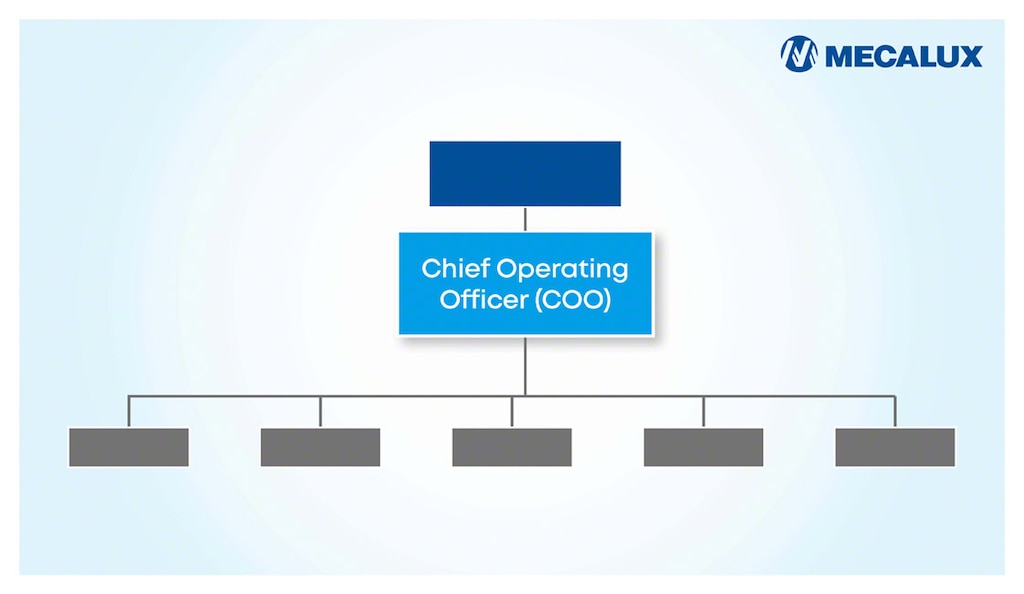
Chief operating officer and role in the supply chain
The chief operating officer — an increasingly common role related to the supply chain — is vital to the results of many organizations.
What is a chief operating officer?
A chief operating officer (COO), also known as the head of operations or chief operations manager, oversees a company’s business operations to ensure financial stability and growth. Although their duties may vary, this individual holds a strategic position and typically reports to the CEO.
In recent times, this profile has focused on improving service quality, adapting the business to customer needs, reducing organizational costs, and pursuing efficiency.
What does a chief operating officer do?
Depending on the company, the operations area may handle different tasks. Nevertheless, the chief operating officer must ensure that logistics and manufacturing operations are carried out properly, contribute to profitability, and comply with current regulations and standards. This role acts as a link between different departments and is responsible for integrating all processes.

What does a chief operating officer do?
The position of chief operating officer is closely linked to logistics. It involves decisions ranging from supplier selection to product sales and marketing. The COO must focus on the entire supply chain to maximize efficiency, avoid cost overruns, and fulfill company objectives.
- Develop strategies. These professionals oversee day-to-day operations, including purchasing and distribution processes. To do this, they establish commercial alliances and oversee the organization’s resources.
- Manage logistics activity and resources. Logistics operations are crucial for the chief operating officer to successfully implement their plans. As the person responsible for product delivery and project profitability, they can use tools such as a distributed order management system or warehouse management software to gain global supply chain visibility.
- Implement policies and procedures. These executives seek to improve operational performance by coordinating departments.
- Optimize processes. Chief operating officers must monitor the business to foster continuous improvement. For example, following strategies such as automation helps reduce time spent on repetitive tasks so it can be used to carry out work that adds more value.
- Supervise teams. Since their work cuts across multiple areas, the operations COO must maintain contact and collaborate with the heads of other departments.
- Monitor performance. In fulfilling their mission, it’s advisable to use measurement tools and supply chain KPIs that provide an accurate and real-time view of the company’s throughput.
What challenges does a chief operations officer face?
The role of COO becomes more complex as a business grows, which means that in some organizations, it’s shared by several people. Because of the complexity and responsibility of their responsibilities, these executives employ specialized software solutions that provide them with all the data they need to check while avoiding the chaos that can be created by spreadsheets or outdated manual tracking tools.
The following companies are just a few of those with chief operating officers who have increased their throughput:
- Würth Modyf. The workwear and safety footwear business has managed to prepare more than 1,500 orders a day during the peak season in its Polinyà (Spain) warehouse thanks to the Easy WMS warehouse management system. “It communicates with the agencies we work with, which facilitates shipments and rigorous tracking of packages,” says COO Juan Martínez regarding one of its Easy WMS modules.
- IKEA Components. This subsidiary of the Swedish multinational is responsible for packaging and delivering furniture accessories and components from Malacky (Slovakia). Its commitment to automating its warehouse with the help of an expert company like Mecalux has brought flexibility and efficiency to its operations. “We no longer have to worry about moving stock internally because automation does it for us, allowing us to focus on maintaining inventory,” says Chief Operating Officer Pavol Masarovič.
The chief operating officer in the company’s organizational chart
The roles and responsibilities of chief operating officers can vary by business, so it isn’t possible to determine a single location for this role in a company’s organizational chart. However, this position is typically a senior management position, reporting to the CEO and sending demand forecasts to the warehouse manager.
Due to their high level of responsibility, chief operating officers may be in charge of a dozen people directly and dozens indirectly.

Profile of a chief operating officer
Organizations seeking a chief operating officer should look for someone with a background in logistics and key skills essential for success in this role. These include persistence, the ability to analyze situations and deploy strategies, leadership, communication skills, and empathy, which are essential when interacting with business partners and other employees. Furthermore, this expert must be strongly customer-oriented, show interest in the measures implemented in other companies, and leverage their business vision and emotional intelligence in problem-solving.
Monitor your logistics operations with Interlake Mecalux
Are you looking to streamline your operations with the help of an innovative team and using the latest technologies? At Interlake Mecalux, we can help you. Our company has been upgrading its products continuously since 1966 to optimize our customers’ capabilities. Contact us obligation-free and we’ll find the storage systems and software solutions with the most potential to take your organization’s logistics operations to the next level.
